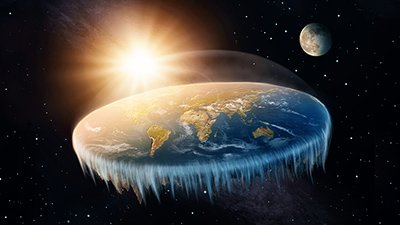Source of Earth’s Water
Carbonaceous chondrites steal comets’ credit for watering the early earth.
News Source
- National Geographic: “Solar System Ice: Source of Earth’s Water”
Evolutionary scientists believe water was needed for the evolution of life but have long puzzled about the earth’s primordial water source. A team led by Carnegie Institute’s Conel Alexander expresses this thought by opening their report with these words:
Determining the source(s) of hydrogen, carbon and nitrogen accreted by Earth is important for understanding the origins of water and life, and for constraining dynamical processes that operated during planet formation.1
Many evolutionary scientists have suggested asteroids bombarding the earth about 4 billion years ago brought organic compounds and water, supplying the raw materials for life to evolve. Just last year, however, scientists assessing the hydrogen isotopes present in a comet suggested that much of earth’s water came from comets. Analysis of the isotopes in carbonaceous chondrites (a type of meteorite) has now trumped the comet claim to fame by demonstrating the isotope content of earth more closely matches the isotopes in chondrites than in comets. These results challenge present theories about the formation of the solar system.
Conventional models of the origin of the solar system originally predicted the distribution of elemental isotopes in the solar system should have been determined by distance from the sun during its formation. However, analysis of solar wind particles collected by NASA’s Genesis spacecraft last year revealed that the isotopes on the earth didn’t match the sun’s. Therefore, “an influx of water ice from the outer Solar System . . . has been invoked to explain the non-solar oxygen isotopic composition of the inner Solar System.”2 If that ice came from comets and meteorites that formed at the same place and time, then their isotope compositions should match each other’s and that of the earth.
An influx of water ice from the outer Solar System . . . has been invoked to explain the non-solar oxygen isotopic composition of the inner Solar System.
By way of testing this idea, the Carnegie team analyzed isotopes in hydrated mineral compounds in 86 carbonaceous meteorites. The meteorites were thought to have originated (along with comets) far from the sun. To everyone’s surprise, the isotope ratios in the meteorites did not match those in the comets. This result contradicts prevailing models for the solar system’s origins. To secular cosmologists, the similarity of the isotope ratios to earth’s ratios suggests carbonaceous chondrites and their parent asteroids between Mars and Jupiter supplied earth with water. Alexander said these findings “have important implications for the current models of the formation and orbital evolution of the planets and smaller objects in our Solar System.”
It is not surprising to find that the more information is gleaned about the composition of the solar system, the more discrepancies with secular cosmological notions emerge. Creation scientists have long pointed to problems with the nebular hypothesis, yet most secular scientists have clung to the solar nebula from which they knew we sprang despite the aberrant physics it demands.3 Secular cosmology represents an attempt to explain the origin of the universe without God. By rejecting the only eyewitness account of the universe’s origins, however, secular scientists reject the most reliable information available to them.
The Bible explains the origin of the water on earth and the origin of the entire universe. God, as the Creator, has told us that He spoke the earth into existence about six thousand years ago. It was initially completely covered with water for two days, contrary to the evolutionist view of a hot molten ball that would boil away its water. After providing the earth with an atmosphere, dry land, and plant life, God created the solar system and the other stars. He specifies that He made the sun, moon, and stars on the fourth day of Creation Week. Studies of isotopes in space cannot unveil the secrets of the universe’s origins. The secrets thus revealed are only worldview-based interpretations.
Further Reading
- Origin of the Solar System
- Sun and Planets Built Differently Says Nasa
- Comets Had a Role In Forming Earth’s Oceans, Study Shows
For More Information: Get Answers
Remember, if you see a news story that might merit some attention, let us know about it! (Note: if the story originates from the Associated Press, FOX News, MSNBC, the New York Times, or another major national media outlet, we will most likely have already heard about it.) And thanks to all of our readers who have submitted great news tips to us. If you didn’t catch all the latest News to Know, why not take a look to see what you’ve missed?
(Please note that links will take you directly to the source. Answers in Genesis is not responsible for content on the websites to which we refer. For more information, please see our Privacy Policy.)
Footnotes
- C. M. O’D. Alexander et al., “The Provenances of Asteroids, and Their Contributions to the Volatile Inventories of the Terrestrial Planets” Science (12 July 2012) DOI: 10.1126/science.1223474.
- Alexander et al., “The Provenances of Asteroids.”
- As discussed more fully in “Origin of the Solar System,” the nebular hypothesis (the solar system condensed from a gas/dust cloud) demands fast moving particles accreted together to form planetesimals rather than bouncing off each other, and it violates the law of conservation of angular momentum.
Recommended Resources

Answers in Genesis is an apologetics ministry, dedicated to helping Christians defend their faith and proclaim the good news of Jesus Christ.
- Customer Service 800.778.3390
- Available Monday–Friday | 9 AM–5 PM ET
- © 2025 Answers in Genesis







